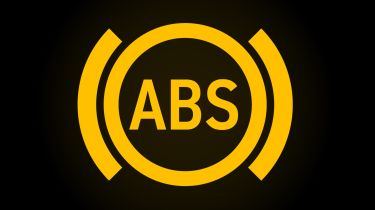What are anti-lock brakes (ABS)?
Anti-lock brakes (ABS) have been required by law for two decades, so how do they work?

If you’ve ever slammed on your brakes in an emergency, you’ve probably relied on anti-lock brakes to bring you to a halt safely. Anti-lock braking systems (ABS) are one of the key safety systems fitted to modern cars, preventing the wheels from locking up and skidding, giving drivers more control when they need it most.
 Electronic handbrakes and auto-hold: what are they and which cars have them?
Electronic handbrakes and auto-hold: what are they and which cars have them?
Developed in the mid-20th century and fitted to modern cars by law since 2004, manufacturers have had plenty of time to refine anti-lock braking systems. Today, they’re reliable and go virtually undetected, but if something does go wrong, it can trigger a dashboard warning light. If your ABS warning light does come on, you should have it investigated immediately – it’s vital to the safety of your car.
What are anti-lock brakes?
Anti-lock braking systems (ABS) are a safety feature that prevents your car's wheels from locking up when you apply the brakes forcefully or on a slippery surface. In an emergency, you’re likely to instinctively stamp on the brake pedal, but this could cause the car to skid out of control or take longer to stop. ABS was invented to counter these effects and enable the driver to brake quickly and safely.
If your wheels begin to slip, the ABS automatically takes over to prevent the wheels from locking (in other words, if you’re still going forwards with a wheel not spinning) under heavy braking, which helps to restore effective braking. ABS also enables the wheels to be steered whilst braking. The result is that the driver can simultaneously slow down and steer, thereby maintaining control of the car and avoiding an accident.
Anti-lock brakes are particularly effective in poor weather conditions. Whether you’re driving in the rain, on a wet road, or in snowy and icy conditions, ABS helps prevent skidding by controlling the braking force applied to each wheel.
Put simply, ABS is your car’s way of making sure that the brakes do their job – stopping the car – without putting you at risk of losing control during an emergency.
How does ABS work?
Anti-lock braking systems use sensors to monitor the turning speed of each wheel. If the driver brakes hard and the system senses that one or more wheels are suddenly slowing down and about to lock, it automatically releases the brake so that the wheel can continue to turn before re-applying to slow it down. It performs this operation up to 15 times a second (an action you can feel as a firm pulse through the brake pedal) to help maintain or restore effective braking and steering control.
By rapidly releasing and applying the brakes to a particular wheel, the anti-lock braking system ensures that the wheel continues to rotate, instead of locking up. This is important as your car’s tyres can only grip the road effectively if the wheels are turning. If the wheels lock and are sliding along the road’s surface the tyres will not grip to the road, increasing the risk of losing control and taking longer to come to a complete stop.
How can I tell if my ABS is working?
When your ABS engages, you’ll probably feel it as a pulsing sensation through the brake pedal, but as systems become more sophisticated, they are becoming less noticeable. In everyday driving, you’ll rarely feel ABS in action. It’s on wet, slippery roads or under heavy braking that ABS has to intervene. If there’s a problem with the system, a warning light on the car’s dashboard will alert you.
If ABS does activate while you’re driving, this light may also flash briefly to warn you that the tyres lost grip and the system triggered, but it will extinguish as soon as traction is regained. If the ABS light stays on at any time, this could signify there's an issue, so you’ll need to have your car inspected by a professional.
When was ABS invented?
ABS may be one of the oldest safety systems fitted to cars, but the technology was actually developed by the aviation industry in the early 20th century. It was invented to prevent aircraft wheels from locking up during landing, with the first fully-electronic ABS system being fitted to the Concorde.
Anti-lock braking technology was later adapted for cars, reaching the mainstream in the 1970s. By the 1990s ABS was more widespread, and since 2004 it’s been a legal requirement for virtually all new cars in the EU, often working hand-in-hand with other safety systems like electronic stability control (ESC).
As more and more safety technology is fitted to modern cars, it’s possible to forget the incredible improvement in safety brought about by ABS and hard to estimate the number of lives it has saved.
More on car safety
- Euro NCAP explained
- What is AEB?
- What is ESP?
- Airbags explained
- What is traction control?
- What is cross traffic alert?
- What are blind spot monitoring systems?
- What is lane-departure warning and lane-keep assist?
- What is traffic sign recognition?
- How to choose the best toddler car seat
- Child seat laws explained
Most Popular
Tips & advice

Car dashboard warning lights: what does each symbol mean?

Electric car charging stations: public networks, charger types, apps and maps






